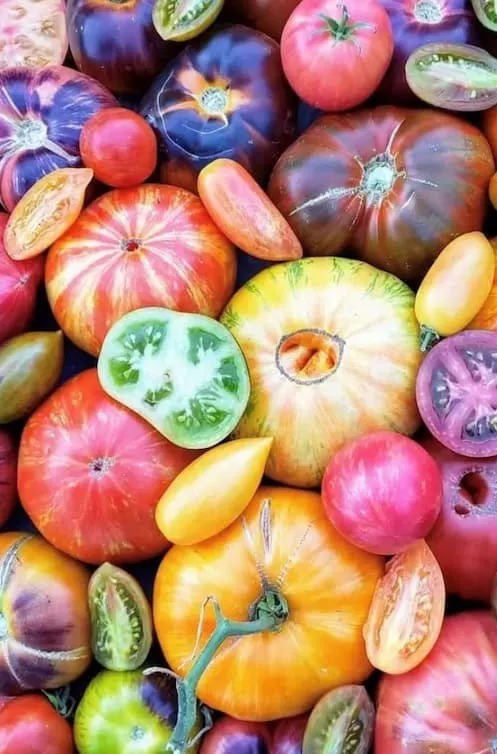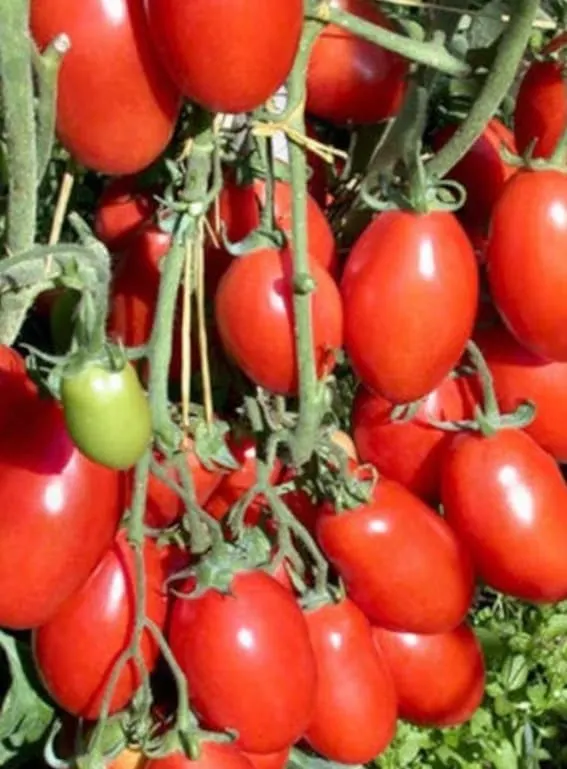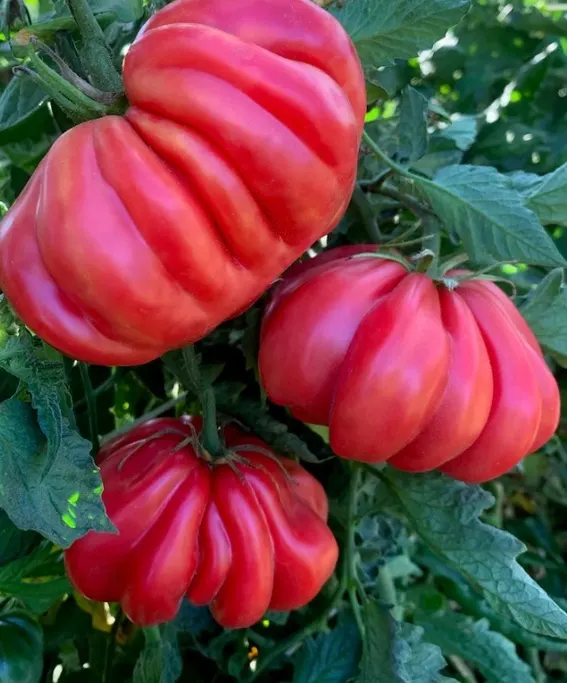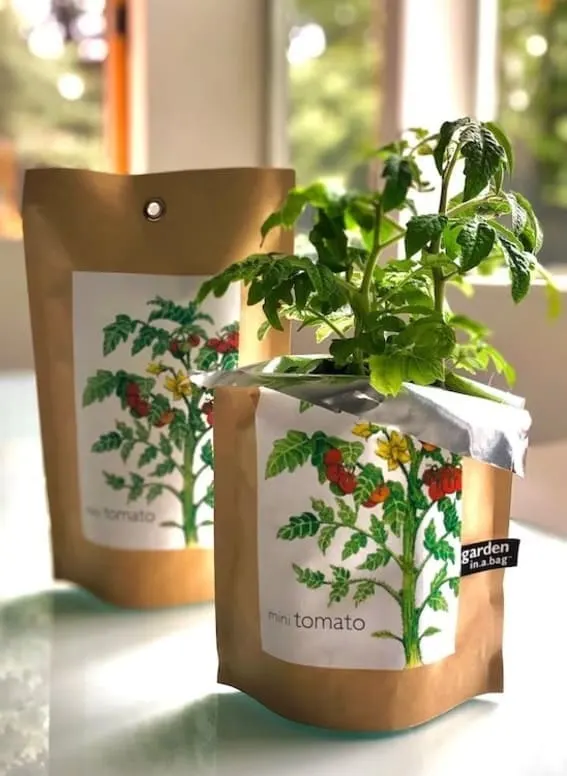Wondering what the common tomato plant problems are & how to fix them? Here are the most common issues tomato plants come by to have happy, thriving tomatoes this summer!
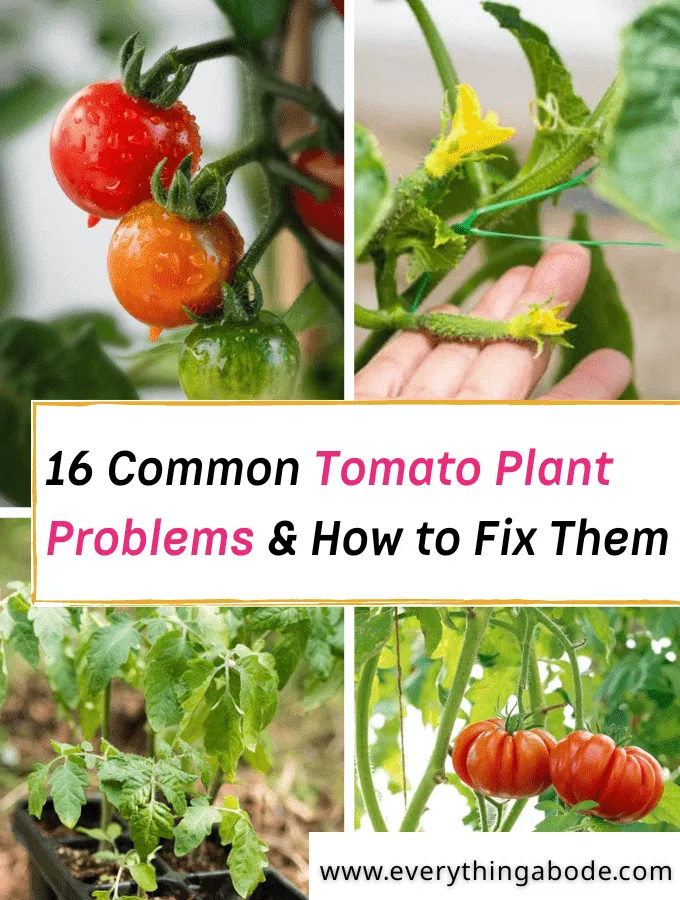
When growing tomatoes at home, specific issues may threaten their health and yield, from pests and diseases to nutritional deficiencies and environmental factors.
While these problems are fixable with simple solutions, only some issues may arise during tomato cultivation.
One of the most widespread tomato plant problems is blossom end rot, caused by a calcium deficiency in the soil, causing black, leathery spots at the base of fruit that make them inedible.
Tomato hornworms – large green caterpillars which feed on tomato leaves – may also cause problems; handpicking or applying organic insecticide can help control these pests effectively.
Also, fungal diseases like early blight and powdery mildew must be controlled through pruning and proper irrigation practices in order to be prevented.
However, you don’t have to worry as we’ll address the most common tomato plant issues and their solutions and answer some frequently asked questions (FAQs) about growing tomatoes.
By the time this article ends, you should have everything necessary to cultivate healthy and productive tomato plants in your garden!
Common Tomato Plant Problems
Growing tomatoes is an enjoyable endeavor, but it does host its challenges. Tomato plant issues include diseases, pests, poor fruit set, or cracking of fruits. Here are some of the most frequent tomato plant issues and solutions to help out your green thumb this year!
1. Stunted Growth.
If your tomato plants seem stunted and stagnant, this could be because they don’t receive enough light. Move them to a brighter location, and they should flourish!
2. Overcrowding.
Like us, tomato plants need space of their own to flourish fully. Cramming them too closely won’t allow for proper development – give them some breathing room, and you will reap a fruitful harvest in return!
3. Sunscald.
Everyone needs sunscreen from time to time – including tomato plants! Too much sunshine can damage their fruits, so provide shaded areas where possible and let them stay fresh!
4. Sub-par Fruit Production.
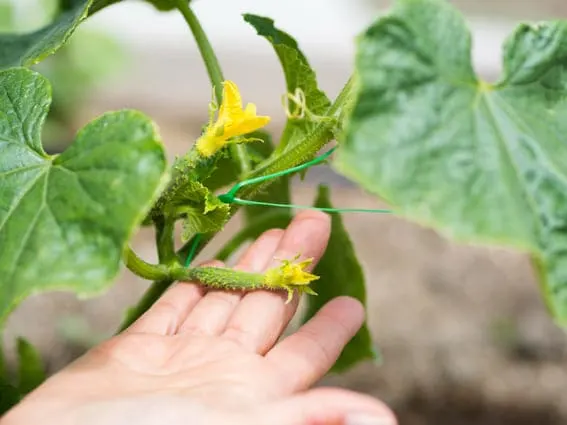
If your tomato plants haven’t produced fruit as promised, give them an encouraging pep talk and some phosphorus-rich fertilizer to get them to produce again quickly. They should quickly respond.
5. Malnutrition deficiencies.
Tomato plants frequently experience nutrient deficiency.
Since tomatoes are heavy feeders and require many different vitamins to grow and produce fruit, soil lacking an ideal mix of essential nutrients can cause stunted growth, yellowed leaves, and diminished fruit production if it doesn’t have sufficient minerals and ions.
If this happens, they could show symptoms such as stunted development, yellowing leaves, or poor fruit yield.
See Also: Tall Garden Phlox: A Beautiful And Easy-To-Care-For Perennial Plant
6. Environmental Stress.
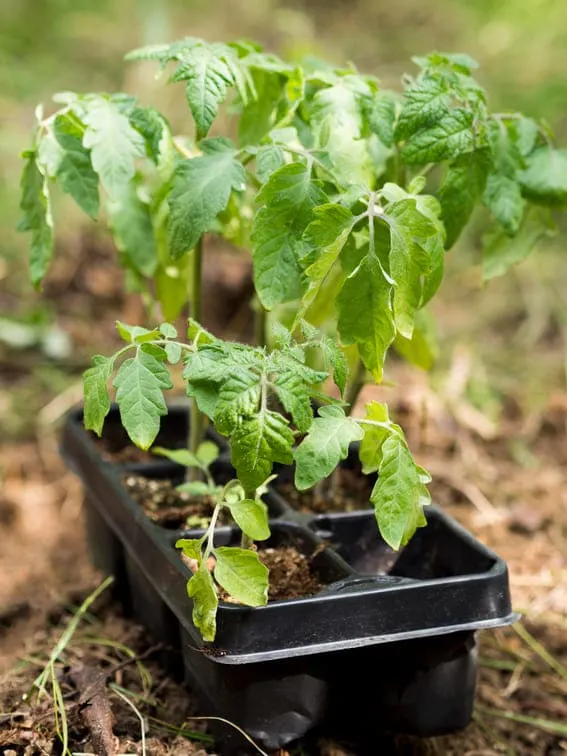
Tomato plants may also experience environmental stress from extreme temperatures or cold, drought, or excessive rainfall. These conditions may result in wilting, leaf drop, and poor fruit production from their leaves.
To minimize environmental stress, tomatoes must be planted in an area with plenty of sun exposure and good air circulation.
Furthermore, water them regularly and provide shade during periods of extreme heat.
7. Early Blight.
Early blight is a fungal disease that attacks tomato foliage and fruit, leaving brown spots with yellow rings on its lower leaves and yellowed ones to yellow and fall off as the disease advances.
To treat early blight effectively, remove infected leaves before spraying your plant with fungicide spray; water at the soil line instead of overhead watering.
See Also: 15 Stunning Pink House Plants For The Home
8. Late Blight.
Late blight is another fungal disease affecting tomatoes that causes brown spots on the leaves and stems of plants, eventually spreading to fruit.
To remedy late blight, remove infected leaves before spraying fungicide over your plant; moreover, water at the soil level instead of overhead irrigation to remedy any potential late blight issues.
9. Blossom End Rot.
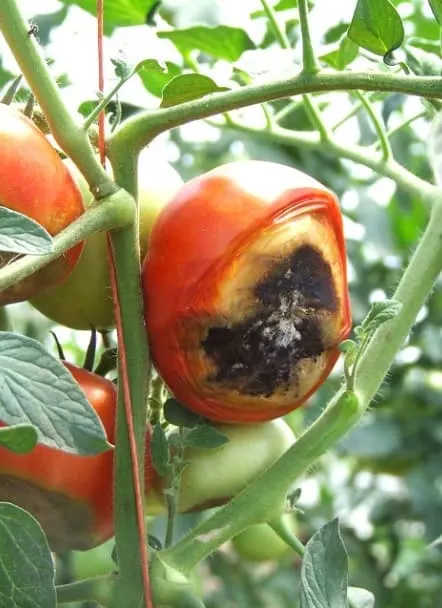
Photo Rebecca Finneran
A common problem plaguing tomato plants’ blossom end rot is an unsightly condition that affects their fruit. It appears as an unsightly black patch on the bottom of each tomato and causes unappetizing mealy fruit inside to develop inside its pulpy body.
Insufficient calcium levels in the soil can cause Blossom End Rot.
To remedy this, it should be added gradually alongside regular watering of plants to restore their vitality and curb this condition.
To solve it permanently, add calcium to the soil and water your plants regularly as soon as you see this condition appears!
10. Fusarium Wilt.
Fusarium wilt is a fungal disease that attacks tomato plant roots, leading to yellowing leaves and stunted growth.
To treat fusarium wilt effectively, remove affected plants immediately, and for at least three years, avoid planting tomatoes in their original spots.
See Also: 14 Cute Miniature Dwarf Vegetables & Fruit Plants For Tiny Gardens
11. Verticillium Wilt.
Verticillium Wilt is another fungal disease affecting tomato roots, leading to yellowed leaves and stunted growth in infected plants.
To combat verticillium wilt, remove infected plants immediately from your garden and avoid planting tomatoes on that spot for at least three years after treating verticillium wilt.
12. Bacterial Canker.
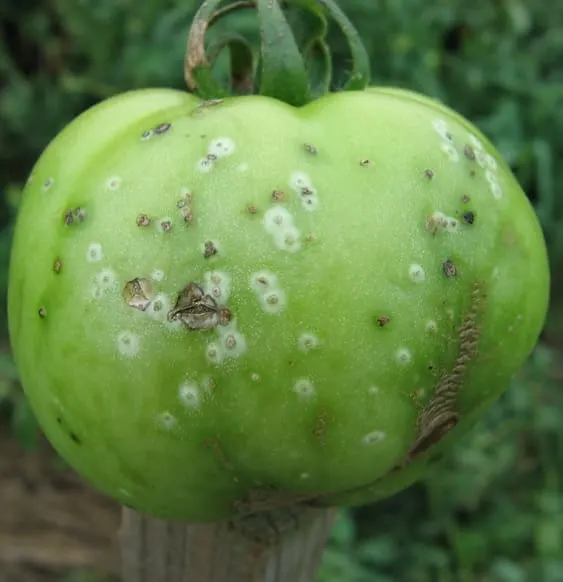
NY State IPM Program at Cornell University
Bacterial canker is a bacterial disease that affects tomato plants’ stems and fruit, manifested by brown spots on stems and fruit that spread quickly until ultimately killing off the entire plant.
To combat bacterial canker, remove infected plants as soon as they appear; do not plant tomatoes again within three years to limit further spread.
13. Catfacing.
Catfacing, or tomato fruit disfigurement, is caused by temperature fluctuations and inconsistent watering habits. Some catfacing tomatoes look beautiful, and some can look odd, depending on your taste.
However, to minimize catfacing issues in tomato plants, consistent watering habits should be adhered to, and it would be wise not to plant in areas with cool evening temperatures to treat catfacing effectively.
14. Blossom Drop.
A tomato plant issue known as Blossom Drop occurs when its flowers fall off before developing into fruit, which high temperatures, excess nitrogen, or poor pollination may cause.
To combat blossom drop, maintain consistent watering habits and adequately support your plants.
15. Cracked Tomatoes.
Fruit cracks are a serious tomato plant problem that negatively impacts their fruit.
Appearing as cracks on their skin, inconsistent watering habits, and high temperatures cause fruit cracks; to effectively address them, maintain consistent watering habits while giving your plants adequate support.
16. Yellowing Leaves.
Yellowing leaves can be a frustrating tomato plant problem caused by various factors – nutritional deficiencies, pest infestation, disease, etc.
To address yellowing leaves effectively, identify their source and take the necessary actions – this might mean adding compost or fertilizer to the soil, pruning away infected leaves, or spraying pesticides to control pests.
Ensure you rotate your crops annually, provide adequate air circulation, and use well-draining soil.
By being proactive and responding immediately to tomato plant issues that arise in your garden, you’ll enjoy a bumper harvest of delicious tomatoes from your own home garden!
Here are a few additional points worth noting about tomato plant care:
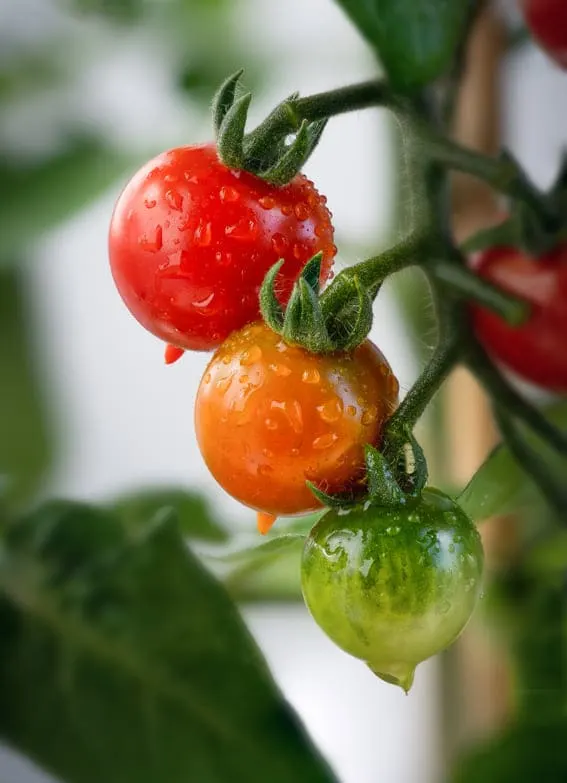
Pruning: Pruning tomato plants is an integral component of care that can improve air circulation, decrease disease outbreaks, and boost fruit production. Remove suckers growing between their main stem and leaves before pruning your tomato plants to help achieve maximum fruit output.
Watering: Tomatoes require consistent watering throughout their growing season. As a general guideline, try watering once every week or more frequently in hot and dry weather; avoid getting water on their leaves as this increases disease risks.
Support: Tomato plants require support to prevent them from collapsing under their fruit’s weight, so use stakes, cages, or trellises to keep them standing up straight.
Companion planting: Companion planting refers to growing certain plants together to enhance growth and deter pests, such as basil, marigolds, and onions for tomatoes.
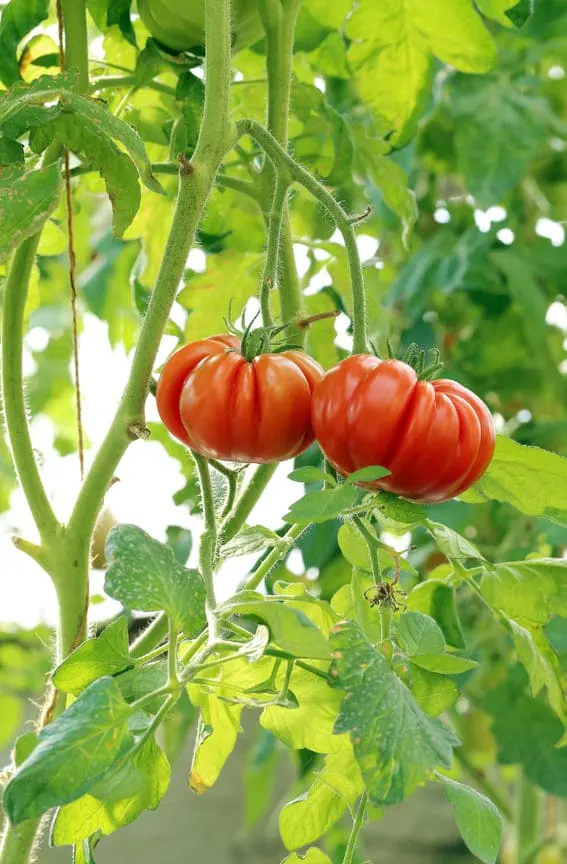
Harvesting Tomatoes: For optimal harvest results, tomato harvest should occur once firm and fully colored tomatoes have been picked from their vine. Any tomatoes still green when picked should remain on the vine to allow enough ripening time before being picked off.
Crop Rotation: Tomato plants can become susceptible to soil-borne diseases, so they must be rotated with other crops yearly to prevent disease buildup in the soil. Doing this helps avoid buildup.
Mulching: Applying mulch around the base of tomato plants can help retain moisture, control weeds, and manage temperature regulation in your soil. Choose organic materials like straw, leaves, or grass clippings as organic mulch options for maximum effect.
Temperature: Tomatoes are warm-season plants that thrive best under warm temperatures. Their ideal daytime temperatures fall between 70-85degF, and nighttime temps above 60degF; below 55degF may stop growth altogether and produce less fruit production.
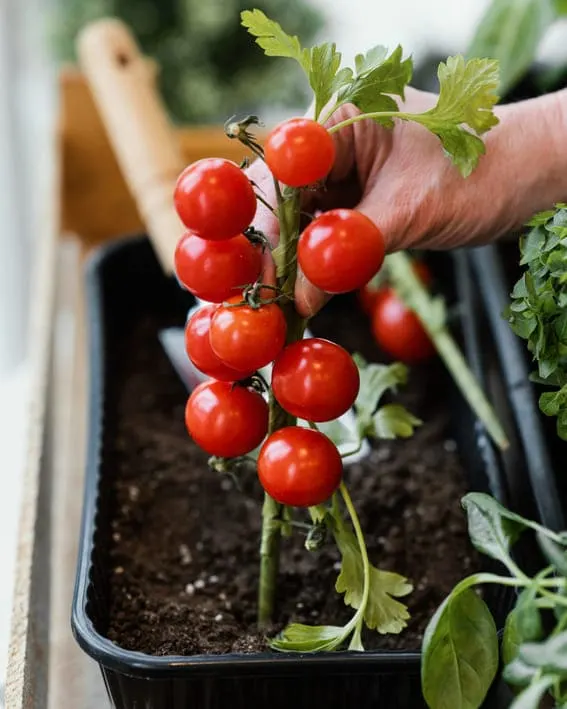
Seed Starting: If you’re starting your tomato plants from seeds indoors, be sure to do it 6-8 weeks before the last frost date in your area so they have enough time to become robust before transplanting outside. This allows the plants enough time to establish strong roots before being placed outside in their final locations.
Disease-Resistant Varieties: Numerous disease-resistant tomato varieties are less vulnerable to common ailments like blight and wilt. Look for varieties labeled as resistant to specific diseases in your region.
If you follow these additional tips for tomato plants to remain healthy and productive, even in adverse environments, you should see plenty of healthy tomatoes growing come harvest time.
Frequently Asked Questions (FAQs)
How can you prevent blossom end rot on tomato plants?
Blossom end rot is a common issue caused by insufficient calcium levels in the soil.
To combat it, ensure your tomato plants receive sufficient amounts of this essential nutrient by adding eggshells, crushed oyster shells, or calcium-rich fertilizers as part of their soil amendment routines.
Also, ensure they receive ample water while not over-fertilizing, which could hinder calcium absorption.
What are some common tomato plant diseases, and how can you identify them?
Tomato plants are susceptible to numerous diseases, including early and late blights, septoria leaf spots, and verticillium wilt.
These conditions can lead to yellowing leaves, brown spots, and stunted growth; to spot them, look for symptoms like spots on leaves wilting and discoloration as a telltale signs.
Good plant hygiene practices like removing infected leaves from circulation and limiting watering frequency should help.
What are the most effective treatments for tomato blight?
Tomato blight is a fungal disease that causes brown spots on the leaves and stems of plants, and brown-spotted fruit that develops.
To combat it, infected leaves and stems should be removed and discarded appropriately before applying fungicides with copper content for extra protection – copper-based formulations work exceptionally well against tomato blight.
How Can You Diagnose and Treat Tomato Leaf Curl?
Tomato leaf curl is a viral disease that causes curled, distorted leaves. To detect it, look out for signs like yellowing and curled foliage as indicators.
Unfortunately, there is no known treatment option, so the best approach would be to remove infected plants promptly and dispose of them correctly – using insecticides to control whiteflies responsibly could also help prevent spread.
What are some practical tips for preventing and treating tomato plant fungal infections?
Fungal infections in tomato plants can be the source of leaf spots and fruit rot, among other issues.
To protect them from fungal infection, ensure adequate air circulation is being provided and avoid overhead watering.
If any signs of fungal infection appear, remove infected leaves and fruits and dispose of them accordingly; use fungicides if possible to reduce the further spreading of plant fungal infections.
How can I tell if my tomato plants receive too much or too little water?
Tomato plants require consistent moisture for proper growth. Overwatering or underwatering can have devastating consequences; to assess whether your tomatoes are receiving too much or too little water, check the soil moisture level by sticking your finger into it up to the second knuckle.
If the soil feels dry at this depth, water your plants, while wet or moist soil indicates further delay before watering your tomato plants again.
Also, look out for signs of stress, such as yellowed leaves that show too little water being applied.
Key Takeaways from common tomato plant problems are:
-Tomato plants can face many common issues threatening their health and yield, such as blossom end rot and tomato hornworms.
-Many of these problems can be rectified by adding calcium to the soil, handpicking pests, or using organic insecticides.
-By understanding how to prevent and address these problems, you can grow healthy tomato plants in your garden that produce fruitful tomatoes.
Common Tomato Plant Problems Final Thoughts.
There you go; these common tomato plant problems and their solutions should help you the next time you wonder what to do.
While tomato plants are relatively straightforward to cultivate, they can still become susceptible to various problems and diseases.
By understanding these common concerns and taking steps to avoid them, home gardeners like yourself can enjoy an abundant harvest of delicious tomatoes from their garden year after year!
Remember, happy tomato plants equal delighted gardeners!
Up Next: 12 Best Air Purifying Pet-Safe Houseplants You Could Own
Author: Everything Abode
Welcome to Everything Abode, your daily inspiration for every activity at home!
Our goal is to inspire you to live an elegant and chic lifestyle from the comfort of your home.
We’ll help you express yourself through authentic style, aesthetic beauty, and stylish home decor.
How to Grow an Orange Tree in a Container Pot
30+ Best Rock Garden Ideas You Should Try Today
Tall Garden Phlox: A Beautiful and Easy-to-Care-For Perennial Plant
12 Outdoor Garden Shelves for Plants to Make Any Garden Look Gorgeous
6 EASY Garden Vegetables to Grow, Even If You're a Beginner
7 Best Clinging Vines That Climb on Anything
Subscribe to Get the Tools That Make My Blog Successful!

When you join my newsletter, I'm going to send you insider advice and tools that I use to grow my blog! I only save the BEST for my email list so don't wait!

